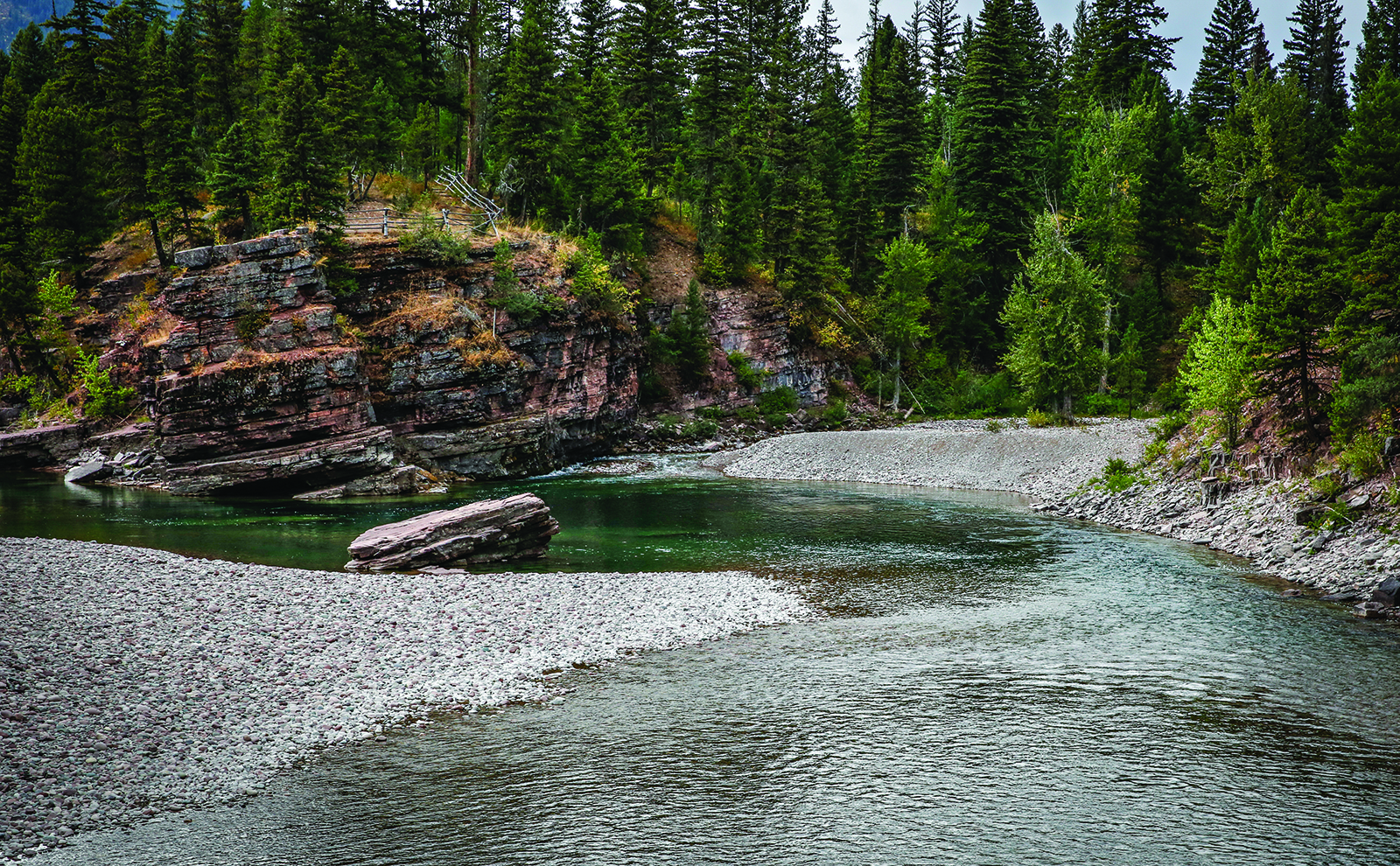Flathead Forest Moves Forward on Proposed Spotted Bear Timber Sale
Project scope includes 757 acres of commercial timber harvest near the Bob Marshall Wilderness Complex; public objection period continues through Aug. 26
By Tristan Scott
Flathead National Forest officials are moving forward on a proposed timber project that would include 757 acres of commercial harvest near the Spotted Bear River’s confluence with the South Fork Flathead River, about 40 miles southeast of Hungry Horse.
Forest officials announced the next phase of the planning process last month with the release of their draft decision notice. An objection period lasting until Aug. 26 allows people who have previously submitted timely, specific written comments during any designated opportunity for public comment to file an objection to the draft decision.
The proposed “Spotted Bear Mountain Project” encompasses 3,800 acres within the Spotted Bear Ranger District on the Flathead National Forest, 42% of which would occur on acreage within the wildland-urban interface (WUI) established by the Flathead County Community Wildfire Protection Plan. A section of the South Fork Flathead River that’s been designated as a Wild and Scenic River corridor runs through the project area, although no treatment would occur along the river corridor, according to the proposal.
The draft decision proposes 1,040 acres of vegetation treatments to improve forest diversity and resilience, reduce fuels, and provide timber for the local economy. The entire project area is located just south of the Spotted Bear Ranger Station. A total of 747 acres are proposed for commercial timber harvest and 293 acres are proposed for noncommercial vegetation treatments.
According to the draft decision notice, lack of wildfire in the Spotted Bear Mountain project area has resulted in dense forest conditions and a shift in species composition from ponderosa pine to Douglas-fir. One goal of the project is to increase the presence of fire-tolerant species such as ponderosa pine, which dominated this landscape historically. Other goals include improving forest health, reducing fire behavior to facilitate safe firefighter operations and contributing forest products to the local community.
As Spotted Bear District Ranger Scott Snelson explains, the intent of the project is to “address wildland-urban interface fuel loading, diversify plant and tree communities, and provide a mix of forest products for local economies.”
The Forest has received numerous comments regarding the project since the Spotted Bear Ranger District first asked for public input in the fall of 2021, according to Snelson. Some commenters support the fuels reduction and the timber harvest benefits for the local economy. Other commenters expressed concern for fish and wildlife species, particularly bull trout, grizzly bear, lynx and wolverine.
Snelson said the project team considered all comments and agreed upon an alternative that meets project objectives and maintains wildlife habitat security while minimizing impacts to other resources.
“The comments we received indicate how deeply our commenters care for the Forest, the opportunities these public lands present, and for the fish and wildlife that live here,” Snelson said.
The northwest corner of the project area lies near the historic Spotted Bear Ranger Station at the confluence of the Spotted Bear and South Fork Flathead rivers. From that point, the project area extends to the southeast for approximately five miles, bordering the eastern bank of the South Fork.
None of the proposed treatment area has experienced wildfire since before 1885, but wildfires such as the Trail Creek Fire of 2015 have burned nearby and wildfire mitigation is a centerpiece of the project.
In addition to the commercial timber harvest, the proposal includes 293 acres of noncommercial treatments, such as thinning and prescribed burning. Approximately 2.7 miles of roads would be constructed and added to the Flathead National Forest road system, while 0.6 miles of temporary roads would be constructed and then rehabilitated after log hauling is complete, the proposal states. Public motorized access would not change.
In an effort to improve the forest’s long-term resistance to insects, disease and fire, forest managers hope to diversify tree species and sizes. For the Spotted Bear project, the proposed work would decrease the dominance of Douglas fir and increase the presence of aspen and fire-tolerant species such as ponderosa pine and western larch, according to Snelson. Throughout the project area, Douglas fir trees are dying from root disease and beetle kill, he said.
“This project will help our large trees, particularly our large ponderosa pines, thrive into the future,” Snelson said.
Another goal of the of the project is to reduce existing wildland fuels. By reducing forest fuels, expected fire behavior is reduced.
“The proposed treatments are especially important in the northern project area which is close to guest ranches and the Spotted Bear Ranger District buildings,” according to Snelson.
The public can find maps, other project information, and instructions for how to provide comment on the project website. For questions, please contact project leader Gary Blazejewski at [email protected] or (406) 387-3827.